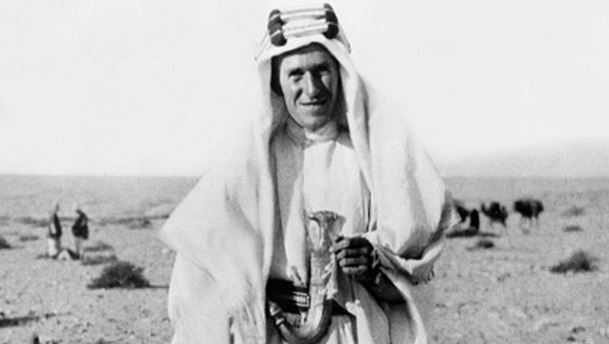Lawrence of Arabia An Avid Motorcyclist & The Helmet
Thomas Edward Lawrence, (1888 – 1935) was a British author, archaeologist, diplomat & a British army intelligence officer during the First World War.
This World War hero, TE Lawrence, commonly known as Lawrence of Arabia, is perhaps the twentieth century’s most romantic hero, a diminutive, multilingual British scholar who led a successful Arab revolt against the Turks in Palestine in World War I in full tribal regalia.
Lawrence was an avid motorcyclist; he owned seven different Brough Superiors, dubbed the “Rolls-Royces of Motorcycles.”Speed addict Lawrence was also a mileage junkie, and would think nothing of leaving Brough’s Haydn Road works in Nottingham on a Friday night on his SSI00, and returning on Monday morning with the back tyre worn down to the canvas and 1000 extra miles on the clock.
On the morning of May 13, 1935, Lawrence sped through the English countryside on his Brough Superior SS100 motorbike. He suddenly saw two boys on bicycles on the narrow country road and swerved to avoid them. However, he clipped one of the bikes and was thrown forward over the handlebars. Lawrence never recovered from his massive brain injuries and died at the age of 46 on May 19. It was two months after he had left military service.
He was taken to Bovington Camp Military Hospital in a coma, soon after his accident. Where the best specialists in the country were rushed to save him. One of them was the young neurosurgeon Hugh Cairns.
At the time, helmets were only worn during races, and he sustained a skull fracture and massive head injuries. Cairns was so profoundly moved by the tragedy of this famous First World War hero’s tragic death from severe head trauma, that he devoted his career to head trauma in motorcyclists.
In his research he observed that 2279 motorcyclists and pillion passengers were killed in road accidents during the first 21 months of the war. However, there were only 7 cases of motorcyclists injured while wearing a crash helmet.
Cairns research led to the use of crash helmets by both military and civilian motorcyclists


